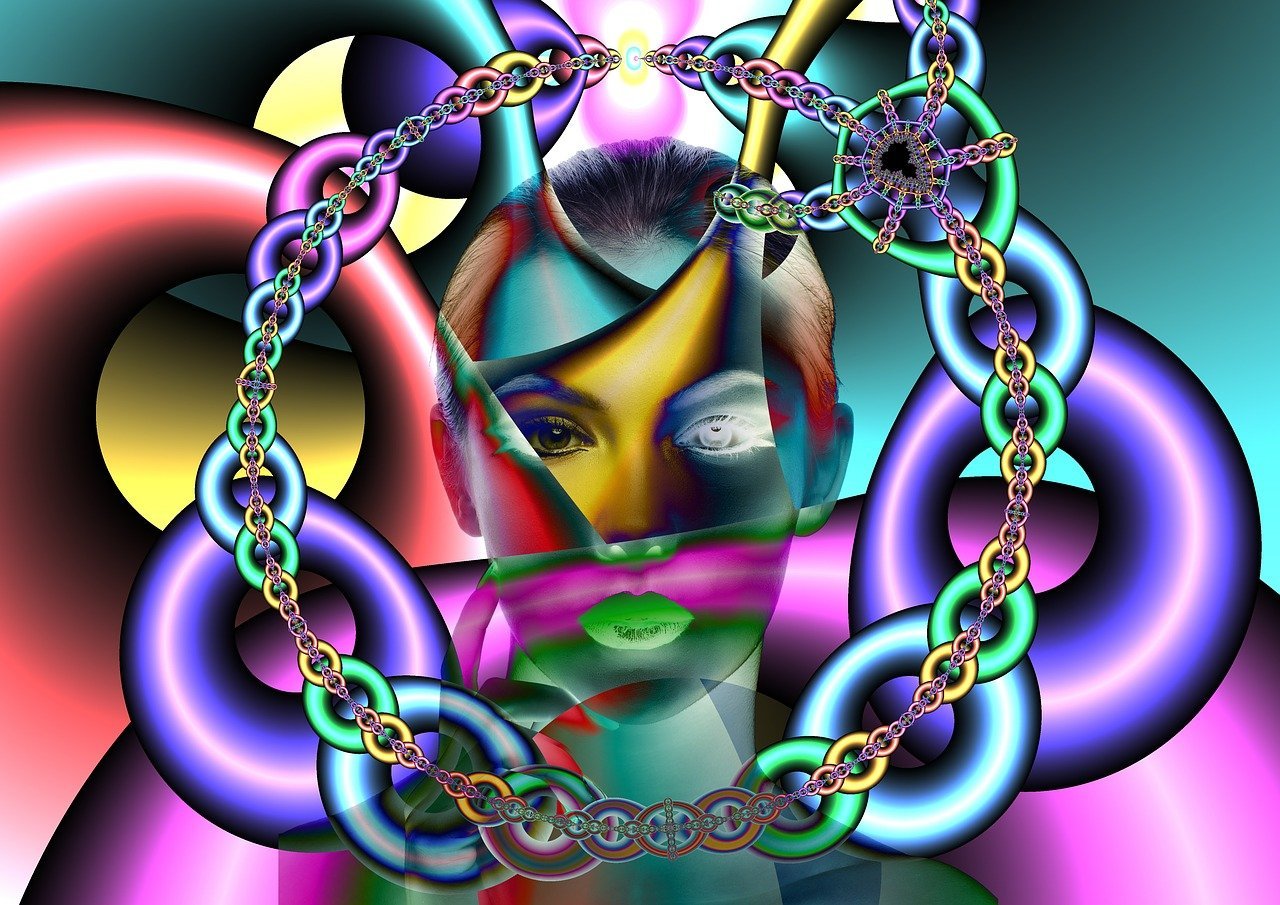
Click below to listen to this article:
Schizoid personality disorder
Schizoid personality disorder (SzPD) is a mental health condition that affects how a person relates to others and expresses emotions. People with SzPD tend to have little or no interest in forming close or intimate relationships, and they often prefer to spend time alone. They may also appear detached, cold, or indifferent to other people’s feelings and opinions. SzPD is not the same as schizophrenia, although some symptoms may overlap. SzPD is also different from autism spectrum disorder, which involves difficulties with social communication and interaction. The exact causes of SzPD are unknown, but some possible factors include genetic predisposition, early childhood experiences, brain structure and function, and prenatal influences. SzPD is diagnosed based on the presence of persistent and pervasive patterns of behaviour that deviate from the norm and cause significant distress or impairment in various areas of life. There is no specific treatment for SzPD, but some people may benefit from psychotherapy, medication, or other interventions that address their co-occurring conditions or symptoms. This article will discuss the potential causes, diagnosis and treatment of Schizoid personality disorder.
What is schizoid personality disorder?
Schizoid personality disorder (SzPD) is a mental health condition that affects how a person relates to others and the world. People with SzPD tend to be detached, solitary, secretive, and emotionally cold. They may have little or no interest in forming close relationships, engaging in social activities, or expressing their feelings. They may also have difficulty understanding or responding to the emotions and expectations of others. People with SzPD often have a rich inner life, but they prefer to keep it to themselves. They may enjoy fantasy, creativity, or intellectual pursuits, but they do not seek external validation or feedback. SzPD is not the same as schizophrenia, although they share some genetic risk factors and symptoms. SzPD is also different from autism spectrum disorder, which involves impairments in social communication and interaction.
SzPD is estimated to affect less than 1% of the general population, although the true prevalence may be higher due to underreporting or misdiagnosis. SzPD is more common in males than in females, and often co-occurs with other mental disorders, such as depression, anxiety, autism spectrum disorder or schizotypal personality disorder.
Causes of schizoid personality disorder
The potential causes of schizoid personality disorder are not well understood, but some factors may increase the risk of developing this condition. According to some sources, there may be a genetic component, as schizoid personality disorder is more common in relatives of people with schizophrenia or other psychotic disorders. Some studies estimate the heritability of schizoid personality disorder to be around 30 percent. Environmental factors may also play a role, such as having a cold, distant, or intrusive parenting style, or experiencing trauma or neglect in childhood. However, more research is needed to establish the exact causes and mechanisms of schizoid personality disorder.
Diagnosis for schizoid personality disorder
To diagnose SzPD, a mental health professional will use clinical criteria from the Diagnostic and Statistical Manual of Mental Disorders, Fifth Edition (DSM-5). These criteria include:
- A persistent pattern of detachment from and general disinterest in social relationships
- Limited expression of emotions in interpersonal interactions
The diagnosis must also cause significant distress or impairment in the person’s functioning and not be better explained by another mental disorder, a medical condition, or substance use.
Similarities with other mental health conditions
SzPD shares some similarities with other mental health conditions, such as autism spectrum disorder (ASD), schizotypal personality disorder (STPD), and avoidant personality disorder (APD). However, there are also important differences that can help distinguish SzPD from these conditions.
One similarity between SzPD and ASD is that both involve difficulties with social communication and interaction, as well as a preference for solitude and reduced emotional expression. However, a key difference is that ASD is associated with neurodevelopmental challenges that affect social capacity, while SzPD is related to social motivation. This means that people with ASD may have trouble understanding social cues, comprehending language, or adapting to changing situations, while people with SzPD may understand these aspects but lack the desire or interest to engage with others. Additionally, people with ASD may have other symptoms such as repetitive behaviours, sensory issues, or special interests, which are not typical of SzPD.
A second similarity between SzPD and APD is that both involve social inhibition and avoidance of interpersonal contact. Both conditions may also stem from a fear of rejection, criticism, or ridicule. However, a crucial difference is that APD is characterized by a strong desire for social relationships and intimacy, but a lack of confidence and self-esteem to pursue them. People with APD may also experience more anxiety and distress in social situations than people with SzPD.
One similarity between SzPD and STPD is that both are classified as cluster A personality disorders, which involve odd or eccentric patterns of thinking and behaviour. Both conditions may also involve social withdrawal, emotional detachment, and unusual perceptual experiences. However, a major difference is that STPD is marked by more pronounced cognitive and perceptual distortions, such as magical thinking, paranoia, or ideas of reference. People with STPD may also have more difficulties with reality testing and may appear more bizarre or eccentric than people with SzPD.
In conclusion, SzPD has some common features with other mental health conditions, but it also has distinct characteristics that set it apart. One possible factor that may influence the development of SzPD is attachment style, which refers to the way people form emotional bonds with others. According to some studies, people with SzPD may have an insecure-avoidant attachment style, which means they tend to avoid closeness and intimacy due to mistrust or fear of dependency. This may explain why they show little interest in social relationships and emotional expression.
Treatment options for schizoid personality disorder
There is no cure for SzPD, but there are treatment options that can help people manage their symptoms and improve their quality of life. The main form of treatment is psychotherapy, which involves talking to a mental health professional who can help the person understand their condition, cope with their challenges, and develop social skills. There are different types of psychotherapy that can be used for SzPD, such as:
- cognitive behavioural therapy (CBT): This therapy focuses on identifying and changing negative thoughts and behaviours that contribute to social withdrawal and isolation. CBT can help the person challenge their beliefs about themselves and others, learn to communicate more effectively, and practice social interactions in a safe environment.
- Psychodynamic therapy: This therapy explores the underlying causes of SzPD, such as childhood trauma, attachment issues, or unresolved conflicts. Psychodynamic therapy can help the person gain insight into their personality, emotions, and motivations, and resolve any unconscious conflicts that may affect their relationships.
- Group therapy: This therapy involves participating in a group of people who share similar issues or goals. Group therapy can provide a supportive and structured setting for the person to practice social skills, receive feedback, and learn from others’ experiences.
In some cases, medication may also be prescribed to treat co-occurring conditions that may worsen SzPD symptoms, such as depression, anxiety, or schizophrenia. Medication can help reduce distress and improve mood, but it cannot change the core features of SzPD. Therefore, medication should be used with psychotherapy for optimal results.
SzPD is a chronic condition that requires ongoing treatment and support. People with SzPD may benefit from seeking help from a qualified mental health professional, who can tailor the treatment plan to their specific needs and goals. Treatment can help people with SzPD overcome their social difficulties, enhance their well-being, and lead more fulfilling lives.
Self-care and coping techniques
there are some self-care and coping strategies that may help people with this condition improve their quality of life and well-being. Some of these strategies are:
Practising self-compassion. People with SzPD may struggle with low self-esteem, self-criticism, or feelings of emptiness or loneliness. Practising self-compassion can help them cultivate a more positive and accepting attitude towards themselves, and recognize their strengths and values. Self-compassion can also help them cope with stress, challenges, or failures in a more constructive way.
Seeking support from others. People with SzPD may find it hard to reach out to others for help or support, or to trust or rely on them. However, having a supportive network of family, friends, or peers can be beneficial for people with SzPD, as they can provide emotional, practical, or informational support when needed. People with SzPD can also seek support from online communities, support groups, or helplines that cater to their specific needs or issues.
Potential benefits of self-transcendence for schizoid personality disorder
self-transcendence is a personality trait that involves the expansion of personal boundaries, including, potentially, experiencing spiritual ideas such as considering oneself an integral part of the universe. Some studies have suggested that self-transcendence may have positive effects on psychological wellbeing, such as reducing stress, enhancing coping skills, and promoting optimism. However, the relationship between self-transcendence and SzPD has not been well explored. Could self-transcendence be of potential benefit to people with SzPD? This is an intriguing question that deserves further investigation. One possible hypothesis is that self-transcendence could help people with SzPD to overcome their social isolation and emotional detachment by fostering a sense of connection and meaning with something larger than themselves. Alternatively, another hypothesis is that self-transcendence could exacerbate the symptoms of SzPD by increasing the discrepancy between their inner fantasy world and the external reality, leading to more alienation and confusion. These hypotheses are not mutually exclusive and could vary depending on the individual’s level of self-transcendence, the nature of their fantasy world, and the quality of their social environment. Therefore, more empirical research is needed to examine the effects of self-transcendence on people with SzPD and to identify the factors that may moderate or mediate these effects.
Suggested self-transcendence techniques which may be of benefit
Some self-transcendent practices which may benefit individual’s with Schizoid personality disorder include mindfulness, meditation, yoga, nature and positive affirmations. These practices can help them to:
- Increase their awareness of their thoughts, feelings and sensations, and learn to accept them without judgment or criticism.
- Develop a more positive and compassionate attitude towards themselves and others, and reduce their feelings of isolation and alienation.
- Enhance their physical and mental wellbeing, and cope with stress, anxiety and depression.
- Cultivate a sense of curiosity, wonder and appreciation for the natural world, and reconnect with their senses and emotions.
- Strengthen their self-confidence, self-worth and self-love, and affirm their values and goals.
Other self-transcendent practices which may be of benefit are:
Art therapy: Art therapy is the use of creative activities, such as drawing, painting, sculpting or collage, to express oneself and explore one’s emotions. It can help people with SzPD to tap into their imagination, creativity and intuition, as well as to communicate their feelings and thoughts in a non-verbal way. Art therapy can also help them to develop their self-awareness, self-expression and self-esteem.
Music therapy: Music therapy is the use of music, such as listening, singing, playing or composing, to promote health and well-being. It can help people with SzPD to relax, cope with stress and anxiety, improve their mood and cognition, and stimulate their brain activity. Music therapy can also help them to connect with their emotions, memories and identity, as well as to enjoy the beauty and harmony of music.
Journaling: Journaling is the practice of writing down one’s thoughts, feelings, experiences and goals regularly. It can help people with SzPD to organize their thoughts, reflect on their life, clarify their values and priorities, and track their progress and achievements. Journaling can also help them to vent their emotions, release their inner critic, and discover new insights and perspectives.
These practices may not be a cure for SzPD, nor are they a substitute for professional help. They are complementary tools that can support people with SzPD in their journey of personal growth and healing. However, they may not be suitable for everyone, and some people may find them challenging or uncomfortable. Therefore, it is important to consult a qualified mental health professional before starting any of these practices, and to seek guidance and support along the way.
Further reading
If you are interested in learning more about schizoid personality disorder, here are some weblinks that you can check out:
Schizoid personality disorder – Symptoms and causes – Mayo Clinic
This link provides an overview of the symptoms, causes, diagnosis and treatment of schizoid personality disorder.
Schizoid personality disorder – Wikipedia
This link provides a comprehensive article on the history, classification, characteristics, causes, diagnosis, comorbidity, treatment and prognosis of schizoid personality disorder.
Schizoid Personality Disorder: Risk Factors, Symptoms & Diagnosis – Healthline
This link provides a brief summary of the risk factors, symptoms, diagnosis and treatment options for schizoid personality disorder.




0 Comments